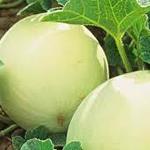FREE: 10 Asst. Sundew Seeds

A member of Listia gave this away for free!
Do you want FREE stuff like this?
Listia is 100% Free to use
Over 100,000 items are FREE on Listia
Declutter your home & save money

"Listia is like EBay, except everything is free" - Los Angeles Times

"An Awesome Way To Give And Get Free Stuff" - Michael Arrington, TechCrunch
This Stuff is Free Too:

FREE

FREE

FREE

FREE

FREE
The listing, 10 Asst. Sundew Seeds has ended.
This auction is for the extremely adventurous Carnivorous rare plant collector with a really green thumb. I have 10 and it looks like possibly more, (hard to tell) Asst. Sundew seeds (Drosera spp.) "Please bid at your own risk", these seeds are very small, like the thickness of fine hair and very delicate (see picture) and react to static electricity, now you see them, now you don't, they are in a small ziploc inside a bigger ziploc.Sundews are sticky flypaper plants. They bear long tentacles on their leaves, and these stalks are tipped with glands which are often brightly coloured. The glands exude attractive nectar, adhesive compounds, and digestive enzymes. Insects that land on the leaves stick fast and are digested. Often nearby glandular tentacles are stimulated and also adhere to the insect, and on many species the entire leaf coils around the prey. These motions are usually slow, taking minutes or hours to occur. An often overlooked aspect of tentacle motion is the fact that a tentacle can bend in just about any direction. But when a bug is caught on a leaf, all the tentacles know the direction to bend towards. That's pretty cool. Scientists wonder how it is done.
In some species, (for example D. burmannii), the tentacle motion is faster--some of the glands can bend 180° in just tens of seconds. Meanwhile, the tentacles of the "snap-trap" D. glanduligera move so fast they essentially fling prey into the trap center!
There are more than 180 Drosera species described and they are found in terrestrial habitats on every continent except Antarctica. The diversity of forms in this genus is amazing. Some tropical forms grow year-round, while others die back to fleshy roots (some even hide in little potato-like corms during the dry season). Species from cold, snowy habitats often spend the winter solstice season curled up in densely packed buds called hibernacula. Some species are tall, erect or viney plants, others are ground-hugging rosettes.
10 Asst. Sundew Seeds is in the Home & Garden | Gardening | Gardening Seeds & Bulbs category

